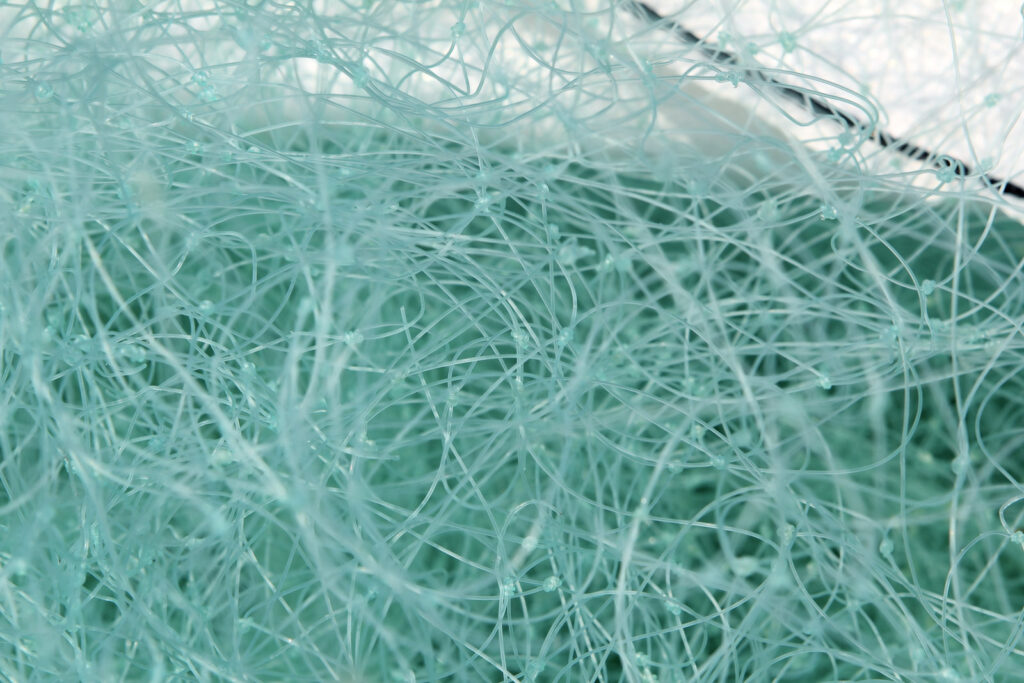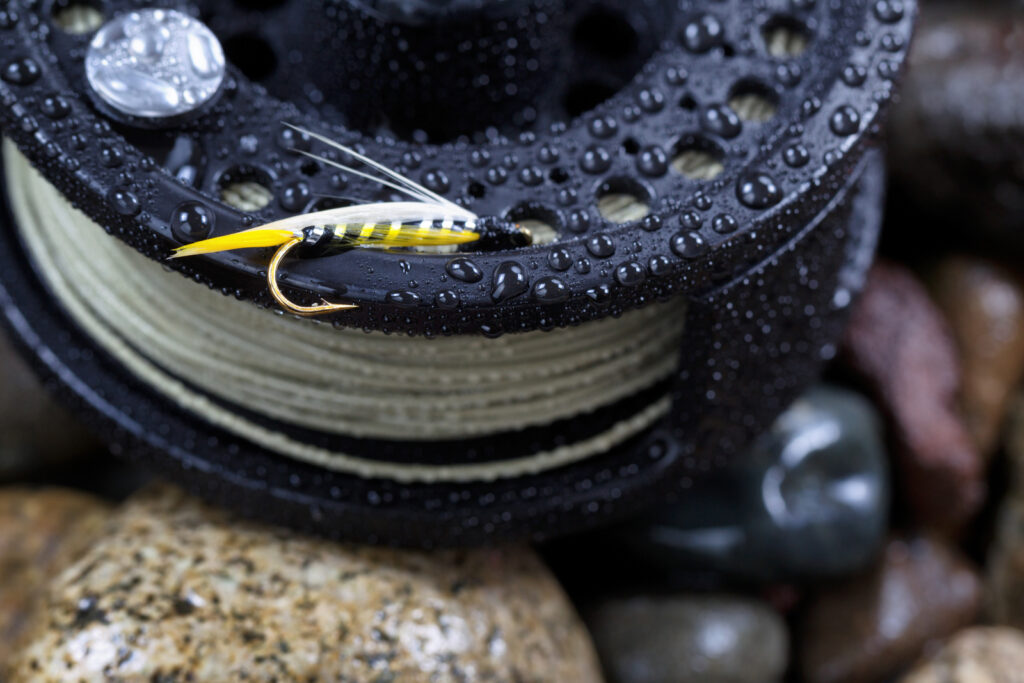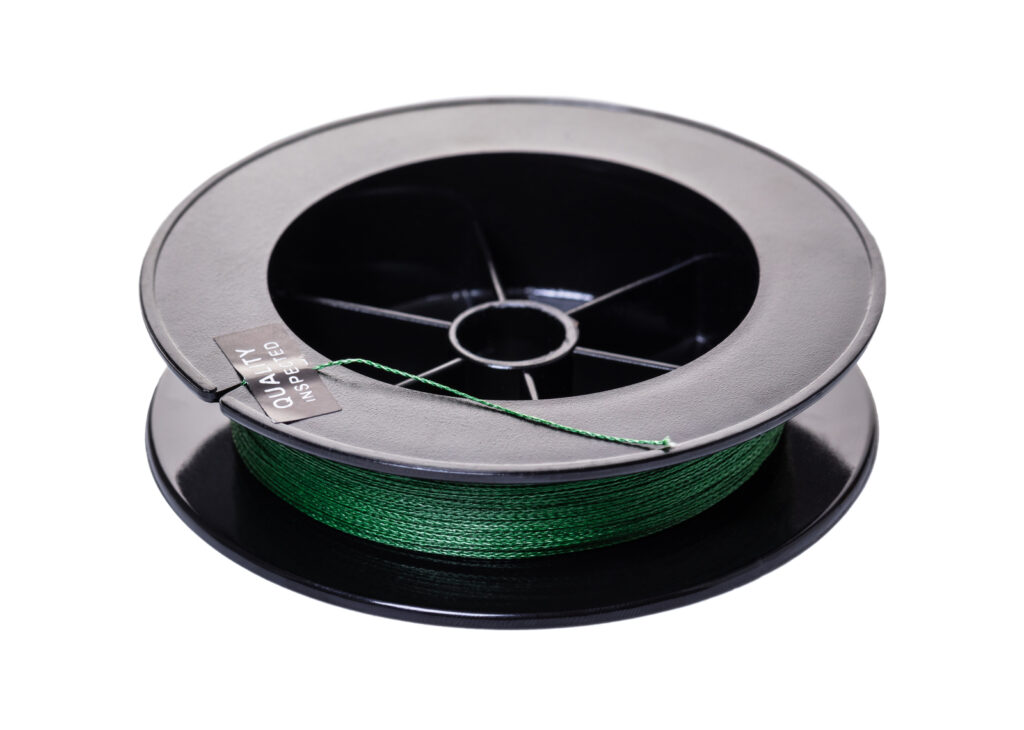Imagine a future where there’s more plastic than fish in the sea. In fact, you may not even need to imagine this at all, as it could very well be a reality. With a startling prediction that suggests there might be more plastic than fish by weight by 2050, many of us are looking to go green with their catch.
Enter biodegradable fishing line. Crafted from natural materials that naturally decompose in the environment, this fishing line works just like regular monofilament or fluorocarbon lines but with the extra advantage of leaving no lasting environmental impact.
If you’re an environmentally aware angler who is curious about how biodegradable fishing lines can help you reel in sustainably, keep reading!

Environmentally Friendly
Biodegradable fishing lines are a breath of fresh air to not only environmentally-minded anglers but also the marine world, offering a sustainable alternative to their traditional, more harmful counterparts.
Let’s put it into perspective. Traditional fishing lines, often composed of non-biodegradable materials like nylon, can persist for centuries. Monofilament lines can take anywhere from 10 to 600 years to completely break down. Braided and fluorocarbon lines can last even longer, upward of 1,000 years!
Comparing this to the mere 3 months to 5 years it takes for a biodegradable fishing line to break down, it’s clear to see which is the better option for reducing long-term damage to the environment.
Plus, biodegradable fishing line – particularly biodegradable monofilament fishing line – offers the same strength as traditional, non-biodegradable options. So, environmentally conscious anglers will still get top-notch performance without a larger environmental footprint.

Protects Wildlife
Biodegradable fishing line offers a lifeline to marine wildlife, especially compared to traditional fishing line.
Traditional nylon, monofilament, and fluorocarbon lines have known adverse effects on aquatic life. Fish, sea turtles, dolphins, sharks, and even birds find themselves ensnared in these non-biodegradable lines. The lines linger in the water long after their intended use, posing an ongoing threat like injury or even death to these animals.
Biodegradable fishing line, on the other hand, reduces this risk by breaking down naturally over time. It allows anglers to continue enjoying the sport while also ensuring the well-being of marine life.
Reduces Marine Debris
Biodegradable fishing lines, among other eco-friendly fishing gear, play important roles in the battle against marine debris, particularly the problem of ghost fishing. Shockingly, almost half of the Great Pacific Garbage Patch is made up of materials linked to the fishing industry.
Ghost fishing happens when abandoned gear, like fishing nets and lines, continues to trap marine life. This abandoned fishing gear begins to pile up, posing significant problems for wildlife and the habitats they depend on.
Given that eco-friendly fishing lines and gear are designed to be biodegradable, they will disintegrate into harmless biomass.
Promotes Responsible Angling
When you choose biodegradable fishing lines, you’re not just selecting a sustainable tool for angling; you’re making a statement. It’s a declaration of your commitment to conservation and that you’re still taking active steps to minimize environmental impact while enjoying the sport.
When you’re out on the water, sometimes you accidentally lose or discard your fishing lines and other gear in the water or along the shoreline. Biodegradable fishing lines offer a reassuring solution by naturally breaking down over time.
But it’s more than the practicality of these lines; it’s about raising awareness among anglers about responsible fishing practices and the importance of preserving our aquatic environments. Biodegradable fishing line serves as a reminder for anglers to be more conscientious about their impact.
Reduces Environmental Impact
Marine ecosystems are delicately balanced. Every species, from the tiniest plankton to the largest sea creatures, plays a role in maintaining this balance. When we disrupt this through activities like fishing and pollution, it can have cascading efforts throughout the entire ecosystem.
This balance doesn’t just affect marine life, but us humans here on land too. Beyond it being a profession or hobby, we rely on fishing as a source of food. So naturally, why would we not want to conserve it in the best way we can?
Recognizing our environmental impact helps us appreciate the delicate web of life in the oceans. Fishing lines may be one of many issues polluting our oceans and freshwater systems, but they’re arguably one of the most persistent.
Biodegradable fishing lines are made from materials like polylactic acid and plant-based polymers. These materials are chosen because they break down quickly and safely in the environment, typically within about 5 years.
On the other hand, traditional fishing lines made from nylon, monofilament, or fluorocarbon can take centuries to break down. This leftover fishing line disrupts the delicate balance of marine life by trapping wildlife, contaminating waterways and oceans, and even posing risks to boats.
Thus, one of the first conscious efforts the environmentally-minded angler can make is to use eco-friendly fishing gear like biodegradable fishing lines.
Many fishing gear manufacturers are joining this fight for sustainability, introducing innovative, eco-friendly, clear-like soft lures and even biodegradable monofilament lines.

FAQs
How long does it take for biodegradable fishing lines to decompose?
Biodegradable fishing lines may start showing signs of decomposition as early as after 2 months of use. However, the timeline can vary based on usage frequency and environmental conditions.
For most casual anglers, these lines typically remain functional for up to a year. If they end up in the environment, biodegradable fishing lines are designed to fully decompose over about 5 years. Sunlight, moisture, and microorganisms all contribute to breaking down these fishing lines.
Where can I buy biodegradable fishing line?
While not as readily available as traditional fishing lines, many tackle shops, online retailers, and specialty eco-friendly stores sell biodegradable fishing lines. Many popular fishing gear manufacturers are also beginning to introduce eco friendly fishing line. For example, angler favorite Tuf Line has introduced a Tuf Line biodegradable monofilament made from a plant-based, 100% biodegradable polymer!
Is it necessary to responsibly dispose of biodegradable fishing line?
Yes! Even though these fishing lines decompose over time, simply leaving them on shorelines or allowing them to pollute water systems can still cause harm. Many fishing locales have designated collection bins for discarded fishing lines, including biodegradable ones.
